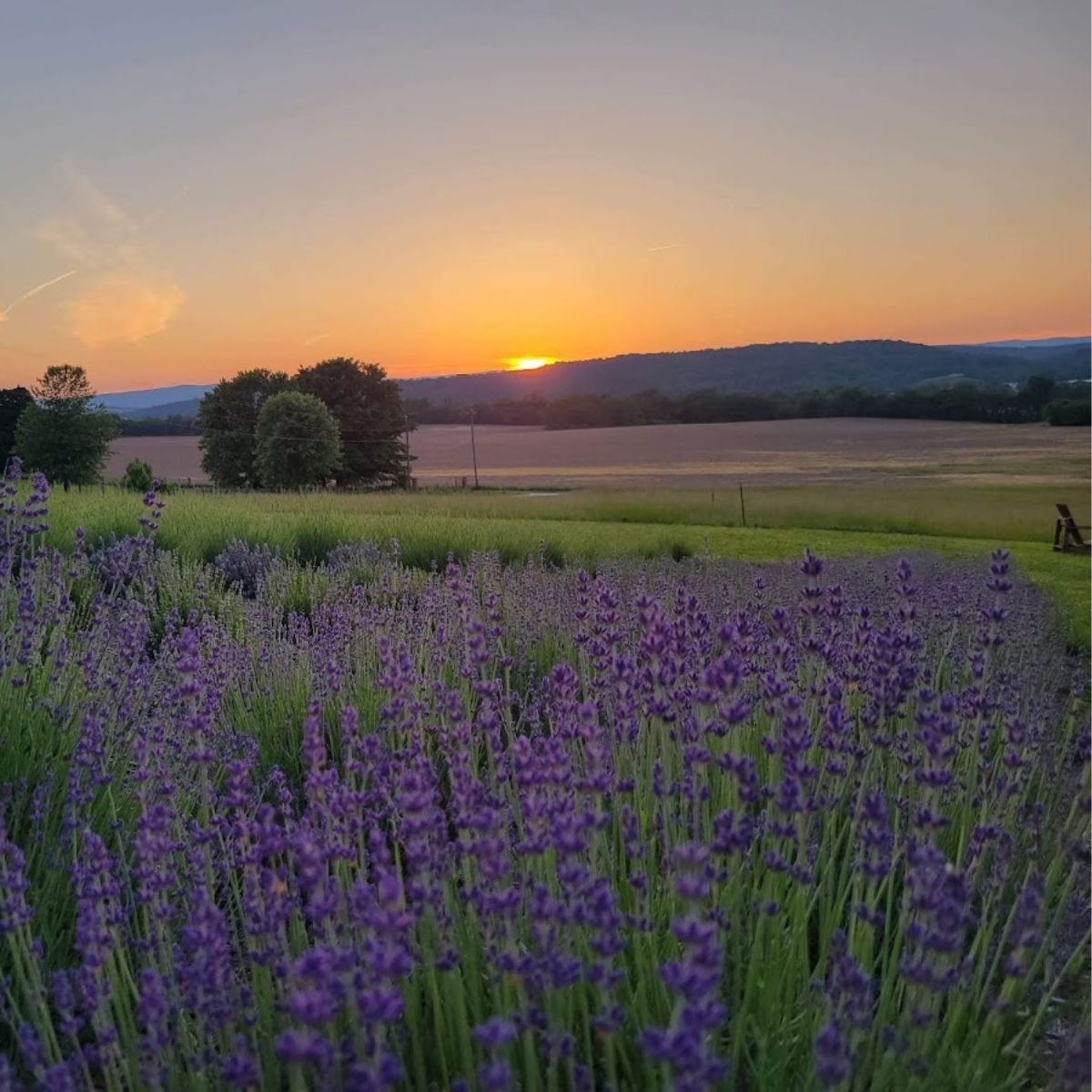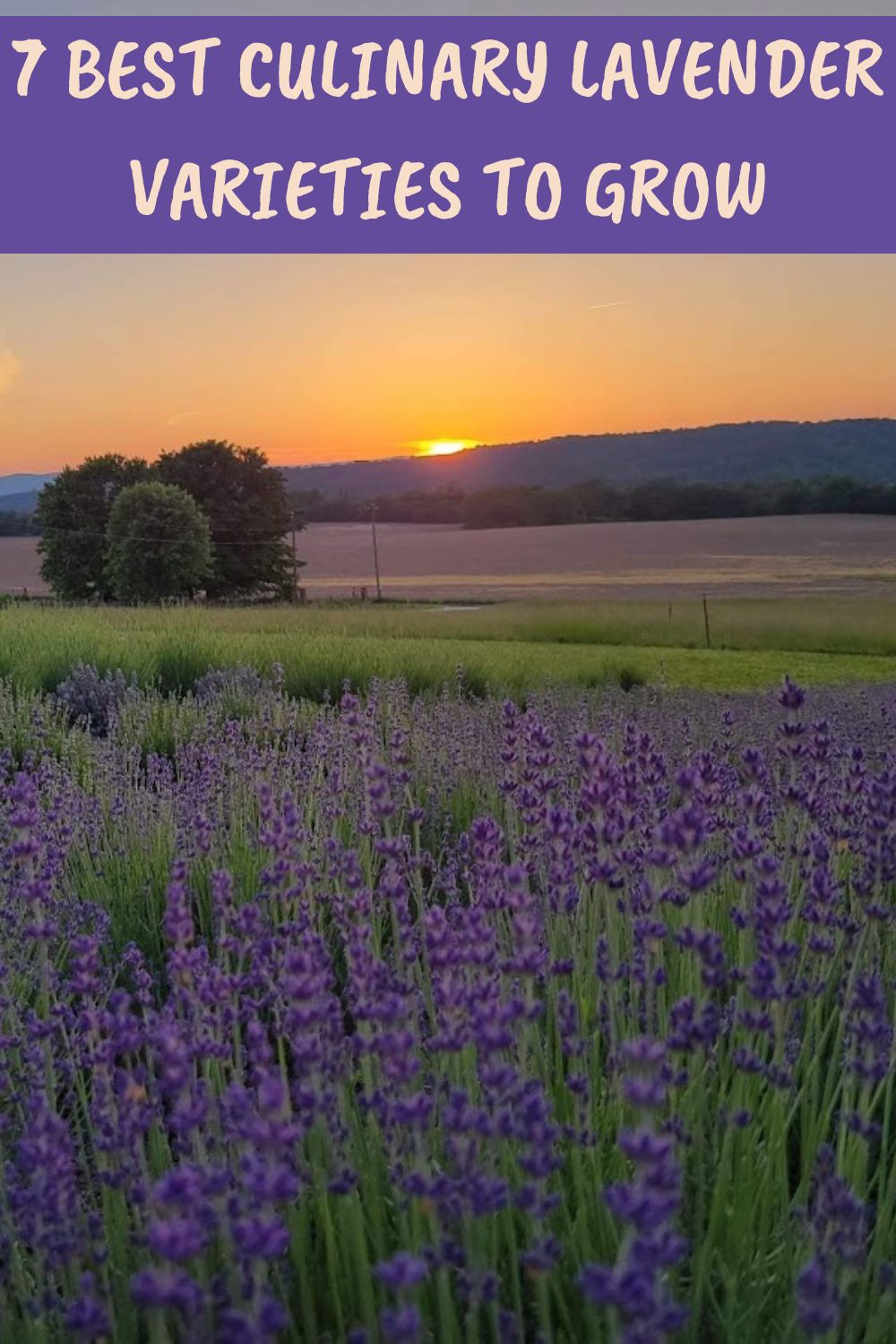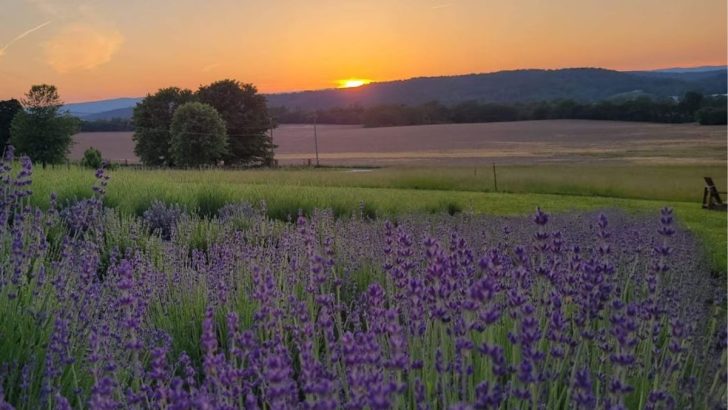While all lavender is edible, you probably don’t want to throw just any lavender buds into your cookies — they might come out of the oven tasting like soap! Of course, everyone will have a different favorite lavender variety to cook with, and some may even have varying preferences based on the type of recipe or mix of flavors. But several culinary lavender varieties tend to come out on top.

What is culinary lavender?
First, what is culinary lavender? Simply put, culinary lavender is lavender suitable for cooking. Depending on the context, this may refer to a variety that has good flavor, buds that have been properly cleaned and handled for cooking, or both.
There are no varieties specifically designated as “culinary lavender,” but some are generally acknowledged to have better flavor than others. Most of these will be English lavenders (Lavandula angustifolia), which have a lower camphor content than other species. The camphor is what gives some lavender — namely Spanish lavender (L. stoechas) and lavendin (L. x intermedia) — a bitter, soapy taste.
Color is another consideration. Pink and white lavender flowers offer some unique hues in the garden, but their buds unfortunately dry to a gray that appears unappetizing in food. Deeper purple flowers will make for more attractive presentation of your culinary creations.
Learn more about the different types of lavender.
How to grow lavender for fun and profit
Culinary Lavender Varieties
Here are some varieties that tend to be favored as culinary lavender:
1. Hidcote (L. angustifolia)
Hidcote is a smaller variety with deep violet-blue flowers, a strong fragrance, and a rich fruity flavor. Make sure to choose an English Hidcote, like Hidcote Blue, as Hidcote Giant is actually a lavandin, which tastes more bitter and soapy.
Suggested uses: lavender sugar and lemon bars.
2. Royal Velvet (L. angustifolia)
A small to medium lavender plant, Royal Velvet has highly aromatic, dark purple buds. Its sweet scent, excellent flavor, and mild citrusy aftertaste make it the perfect addition to desserts, though it also works well in savory dishes.
Suggested use: ice cream!
3. Munstead (L. angustifolia)
An especially popular variety all around, Munstead lavender grows equally well in containers and small hedges. It produces classic, medium purple flowers with a lovely fragrance and an herbal, floral flavor. Munstead can bloom twice.
4. Buena Vista (L. angustifolia)
Buena Vista is a medium-sized lavender that, when harvested or deadheaded, blooms several times throughout the season. Its purple buds dry to a nice dark purple and have a sweet lavender scent as well as a sweet flavor.
5. Melissa (L. angustifolia)
With its light pink buds (which dry to gray), Melissa is best used for recipes in which the lavender does not visually take center stage. However, its flavor has a light peppery note that makes it great for savory dishes.
Suggested uses: meats, marinades, and salad dressing.
6. Folgate (L. angustifolia)
A lavender plant of medium size, Folgate blooms earlier than most other varieties. It has light blue buds that become a lovely deep blue-purple when properly dried. Its mild flavor works well in baked goods.
7. Provence (L. x intermedia)
An exception to the English lavender rule, Provence is a lavandin with less camphor and thus better flavor than other lavandins. This large plant has pale purple buds that easily come off the stem and have an intense, intricate flavor best suited for meats and other savory dishes.
Suggested use: herbes de Provence (leaves).
How To Prepare Culinary Lavender
As with any ingredient you cook with, culinary lavender should be clean. But you don’t want to wash lavender, because wet lavender is just as likely to mold as it is to dry. Instead, just bundle and dry the lavender like normal in a clean, well-ventilated space (see “How to Dry Lavender“). Then remove the buds by rubbing the heads over a large bowl, and store then in a glass jar, in a dark, cool, and dry place. Here’s how to store dried lavender properly.
The cleaning process looks something like this:
- Pick out any large, obvious stems, leaves, and other debris by hand.
- Use a mesh strainer to sift out small debris, continuing to remove any larger pieces you see.
- On a day with a light breeze, sit outside and pour the buds from one bowl to another a few times, allowing the breeze to carry away the chaff.
When handling culinary lavender, from harvesting to cooking, make sure to work with clean hands, clean tools, and a clean workspace.
Of course, lavender can be used fresh from the plant, if you prefer. Just remember that dried herbs are more potent, so you may need to use more fresh lavender for a recipe than you would dried. The benefit of drying culinary lavender is that you can store it for use throughout the year or more conveniently package it to sell (little tins with windows are great for this).
The leaves are also edible, though not as decorative as deep purple buds. These, too, can be used fresh or dried, in things like herb mixes, teas, dry rubs, and marinades.
How To Use Culinary Lavender
There are so many deliciously creative ways to use lavender in the kitchen, as you can see in the list below. Lavender adds a nice bright floral note to beverages, desserts, and even savory dishes. For desserts, try combining lavender with chocolate, lemon, or vanilla. In savory dishes, it pairs well with oregano, thyme, and savory.
When cooking with lavender, the general rule to remember is “less is more.” Too much lavender, just like the wrong variety, can make your creation taste soapy. As little as a half teaspoon of ground lavender buds can flavor an entire batch of cookies! Here are some more ideas:
- tea
- simple syrup (freeze with buds in ice cube trays for pretty summer drinks!)
- lavender lemonade
- lavenderitas (lavender margaritas)
- lavender sugar
- cookies
- cakes
- ice cream
- lemon bars
- herbes de Provence (leaves)
- marinades and rubs
- salad dressing
Did you know that you can create a side business by growing your own lavender? Check out how to market lavender, if you decide to sell some of your lavender harvest.
Lavender is so much more than just a pretty, fragrant garden plant – though it’s nice to simply enjoy it for those lovely qualities sometimes. In addition to its many uses in the garden, in crafts, and for its medicinal properties, lavender adds a unique flavor to a range of foods and drinks. I hope this article has given you the inspiration and knowledge you need to start growing and using culinary lavender!








7 Great Companion Plants For Lavender (And 3 To Keep Away From Them)
Sunday 23rd of April 2023
[…] a few culinary lavender varieties to your garden, and enjoy their flowers in teas, cookies, cakes, and other […]
How To Market Lavender: 8 Popular Methods
Monday 30th of January 2023
[…] make lavender-flavored foods and drinks (you’ll need to grow culinary varieties of lavender) […]
How To Store Dried Lavender: 8 Easy Tips For Preserving The Harvest
Wednesday 25th of January 2023
[…] Clearly label each container with the contents and packaging date. Especially if you grow multiple varieties of lavender, you will want to include the name of the […]
Lavender Flower Colors: 17 Richly Hued Varieties In White, Pink, Purple, And Blue
Tuesday 24th of January 2023
[…] Check out the different types of lavender, including 7 delicious culinary lavender varieties. […]
Where To Buy Lavender Plants: 7 Suppliers (Plus Tips For Buying Healthy Plants)
Thursday 19th of January 2023
[…] size of the plant. To help you decide on varieties, check out our articles on types of lavender, culinary lavender varieties, and lavender flower […]